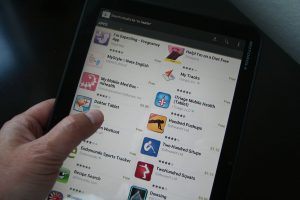 Rising costs and access to health care are issues that weigh heavily on Americans and their families. These issues deepen when it comes to mental health. Common mental illnesses can be extraordinarily disabling, and yet, many patients do not receive treatment.
Rising costs and access to health care are issues that weigh heavily on Americans and their families. These issues deepen when it comes to mental health. Common mental illnesses can be extraordinarily disabling, and yet, many patients do not receive treatment.
What’s Next For:
Revolutions?
Syria?
Mexico?
Japan?
The United States?
Earthquake Safety?
Climate Action?
California Water?
Climate Science?
Solar Energy?
California Fruit Farming?
Technology Investing?
Nanoscience?
Digital Storage?
Artificial Intelligence?
Cyber-Threats?
Social Media?
Space Exploration?
Science Museums?
The Sagehen?
Biodiversity?
The Blind?
Big Data?
Mental Illness?
Health Care Apps?
Maternity Care?
Etiquette?
Ballroom Dance?
Thrill Seekers?
Outdoor Recreation?
Funerals?
Writers?
Movies?
Manga?
Alt Rock?
Women in Mathematics?
Stephen Smith ’17 believes technology will be part of the solution.
After winning his own battle with obsessive compulsive disorder (OCD), the economics grad has used his experience to help others by creating a smart-phone app that provides on-the-go treatment to fight the condition.
The app, which he dubbed nOCD, records real-time data, offers guided cognitive behavioral exercises and allows people with OCD to join in-app support communities at any hour of any day. With this technology, users get 24/7 clinically approved care and are connected to a community that understands them.
“People are always wondering how you’re going to treat mental illness, given the shortage of licensed mental health clinicians,” says Smith. “And the answer is through technology.”
Smith sees this technology trend not only for mental health but for healthcare overall.
“The healthcare industry today is going ‘more mobile’ and ‘more digital’ given that technology offers consumers an always-on, personalized treatment experience,” he says. “Since the majority ‘at-risk’ populations are already actively engaged in technology, utilizing digital solutions to deliver care can have both an immediate clinical as well as an economic impact for both the patient and provider.”
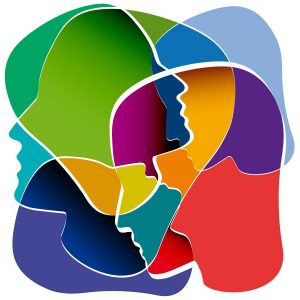 What’s next in the treatment of mental illness will be a direct outcome of what’s now, according to Pomona College Professor of Psychology Sara Masland. Two developments in the field may, over time, transform treatment of psychological disorders.
What’s next in the treatment of mental illness will be a direct outcome of what’s now, according to Pomona College Professor of Psychology Sara Masland. Two developments in the field may, over time, transform treatment of psychological disorders.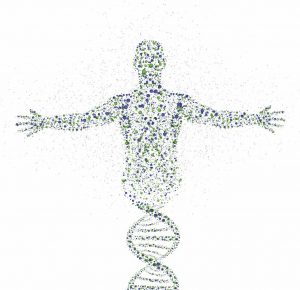 For many of us, the words “big data” have taken on sinister connotations, evoking stories of data breaches, manipulation and abuse. But in medicine and pharmacology, Jan Lethen ’93 believes big data is already saving lives—and in the future, it’s going to get even bigger and save many more.
For many of us, the words “big data” have taken on sinister connotations, evoking stories of data breaches, manipulation and abuse. But in medicine and pharmacology, Jan Lethen ’93 believes big data is already saving lives—and in the future, it’s going to get even bigger and save many more.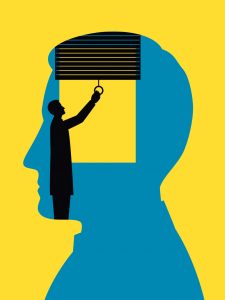 The 1970s TV show The Six Million Dollar Man (which now seems quaintly underpriced in today’s dollars) brought the word “bionic” into general use, with sci-fi connotations that it has never completely shed. But one area of prosthetics where fact has begun to overtake fiction is in the world of bionic vision. In 2015, the Honolulu-based ophthalmologist Dr. Gregg Kokame ’78 was the first physician in the Asia-Pacific region to implant a bionic eye, giving a patient who had been blind from hereditary retinal disease the gift of sight.
The 1970s TV show The Six Million Dollar Man (which now seems quaintly underpriced in today’s dollars) brought the word “bionic” into general use, with sci-fi connotations that it has never completely shed. But one area of prosthetics where fact has begun to overtake fiction is in the world of bionic vision. In 2015, the Honolulu-based ophthalmologist Dr. Gregg Kokame ’78 was the first physician in the Asia-Pacific region to implant a bionic eye, giving a patient who had been blind from hereditary retinal disease the gift of sight.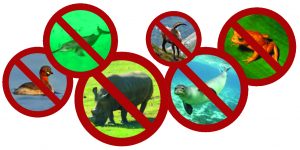 We are in the middle of a mass extinction event, says Professor of Biology Nina Karnovsky, and, this time, it’s our fault.
We are in the middle of a mass extinction event, says Professor of Biology Nina Karnovsky, and, this time, it’s our fault. Pomona College’s mascot, the sagehen—the sage grouse in the real world—needs a “lek” up.
Pomona College’s mascot, the sagehen—the sage grouse in the real world—needs a “lek” up.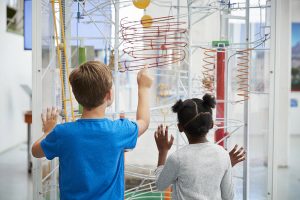 Science museums are not just science lessons for kids any more.
Science museums are not just science lessons for kids any more. As we near the 50th anniversary of the first moonwalk, Colleen Hartman ’77 believes the next chapter in human space exploration is not far away. “When I talk to high-school and younger groups, I always tell them that I’ll be alive when the first human puts her foot down on Mars, and they always laugh,” she says.
As we near the 50th anniversary of the first moonwalk, Colleen Hartman ’77 believes the next chapter in human space exploration is not far away. “When I talk to high-school and younger groups, I always tell them that I’ll be alive when the first human puts her foot down on Mars, and they always laugh,” she says.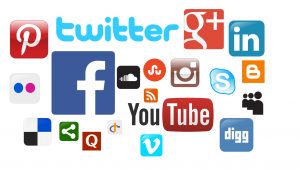 When he’s traveling, Eric Oldrin ‘95 likes to make his kids laugh by connecting with them on Facebook Messenger with bunny ears and a cute little bunny mask on his nose. Of course, Facebook’s head of emerging platforms doesn’t really put on a bunny mask—it all happens in cyberspace, using augmented reality (AR).
When he’s traveling, Eric Oldrin ‘95 likes to make his kids laugh by connecting with them on Facebook Messenger with bunny ears and a cute little bunny mask on his nose. Of course, Facebook’s head of emerging platforms doesn’t really put on a bunny mask—it all happens in cyberspace, using augmented reality (AR).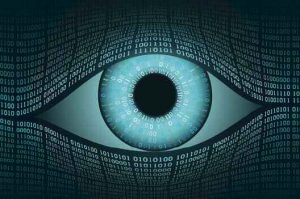 When Professor of Media Studies Mark Andrejevic started writing about what he calls “the surveillance economy” back in 2001, “I was considered to be a very angry, cranky, dystopian naysayer,” he recalls. “But recently—and especially in this past year—it’s become a commonplace that we live in a surveillance society in which our information is leveraged for profit. And so, it’s a weird feeling of vindication and, also, helplessness.”
When Professor of Media Studies Mark Andrejevic started writing about what he calls “the surveillance economy” back in 2001, “I was considered to be a very angry, cranky, dystopian naysayer,” he recalls. “But recently—and especially in this past year—it’s become a commonplace that we live in a surveillance society in which our information is leveraged for profit. And so, it’s a weird feeling of vindication and, also, helplessness.”